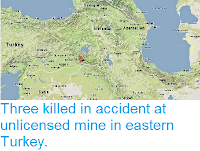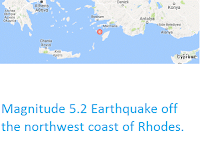The United States Geological Survey
recorded a Magnitude 5.6 Earthquake at a depth of 10 km, about 3 km to the west of the town of Samsat in Adıyaman Province, southeast Turkey,
slightly after 2.05 pm local time (slightly after 11.05 am GMT) on Thursday 2 March 2017. There are no reports of any fatalities associated with this event, but at least five people were injured and a number of buildings destroyed. The event was felt across much of Turkey and neighbouring Syria.
The approximate location of the 2 March 2017 Adıyaman Province Earthquake. USGS.
Adıyaman Province lies at the boundary between the Eurasian Plate to the
north and east, the Anatolian Plate to the west and the Arabian Plate to
the south. The Arabian Plate is being pushed north and west by the
movement
of the African Plate, further to the south. This leads to a zone of
tectonic activity within the province, as the Arabian and Anatolian
plates are pushed
together, along the East Anatolian Fault, and past one-another, along
the Dead Sea Transform.
This movement also leads to a zone of faulting along the northern part
of Turkey, the North Anatolian Fault Zone, as the Anatolian Plate is
pushed past the Eurasian Plate, which underlies the Black Sea and
Crimean Peninsula (transform faulting). This is not a simple process,
as the two plates constantly stick together, then break apart as the
pressure builds up, leading to Earthquakes, which can be some distance
from the actual fault zone.
The northward movement of the African and Arabian Plates also causes
folding and uplift in the Caucasus Mountains, which separate Georgia
from Russia. Again this is not a smooth process, with the rocks sticking
together, then moving sharply as the pressure builds up enough to break
them apart, which can also lead to Earthquakes in the region.
Plate movements and fault zones around the Anatolian Plate. Mike Norton/Wikimedia Commons.
Witness
accounts of Earthquakes can help geologists to understand these events,
and the structures that cause them. The international non-profit
organisation Earthquake Report is interested in hearing from people who may have felt this event; if you felt this quake then you can report it to Earthquake Report here.
See also...








